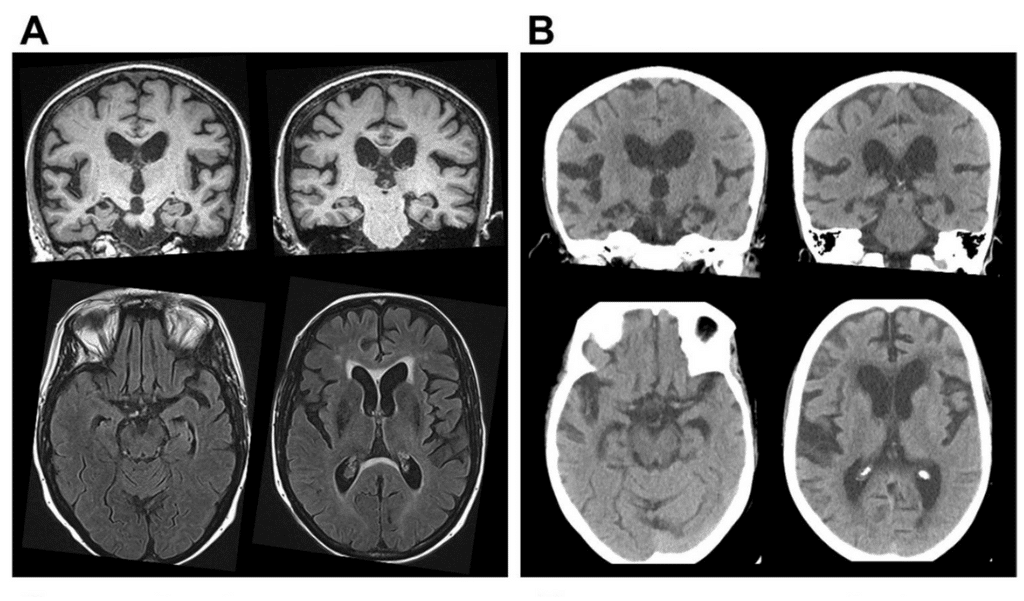By Cait Kearney and Matt Smith
You’ve heard of Alzheimer’s disease, but what about LATE?
Over 30% of autopsied brains of people older than 80 show the presence of LATE, and 55% of people living with Alzheimer’s disease also have LATE.
“LATE is a unique and highly prevalent brain disease,” said Michael Tran Duong, PhD, University of Pennsylvania researcher and medical student.
LATE stands for “Limbic-predominant Age-related TDP-43 Encephalopathy.” Like Alzheimer’s, it’s a neurodegenerative disease that causes memory and thinking difficulties.
The cause of LATE, however, is different than Alzheimer’s. LATE is characterized by the build-up of TDP-43—a protein that was discovered in patients’ brains by University of Pennsylvania researchers in 2006. Alzheimer’s, on the other hand, is caused by the build-up of the proteins amyloid and tau.

Image: Brain imaging of 78-year-old woman with LATE at (A) baseline and (B) ten years after baseline scan. Over a decade, this patient had relatively mild reduction in brain volume and cognitive function, reflecting a slower disease trajectory often seen in patients with LATE alone. Source: Current Neurology and Neuroscience Reports
When a person has both Alzheimer’s and LATE present in their brains, this synergy causes faster cognitive decline than if the person had only one or the other. This variety also contributes to the clinical heterogeneity seen in patients. Dr. Duong says this is why it is important to see a memory specialist if you have concerns about your memory and thinking abilities.
“LATE can coincide with and accelerate other neurodegenerative diseases,” Dr. Duong said.
Scientists are working diligently to develop tools to detect LATE using brain imaging and fluid biomarkers, such as MRI and cerebrospinal fluid. And, because the disease is relatively new, researchers like Dr. Duong are also working to bring awareness of LATE to clinical practice.
“LATE is a common neurocognitive disease entity that should be recognized in the clinical setting,” Dr. Duong said.
Click here to read Drs. Duong and David Wolk’s scientific article on LATE.